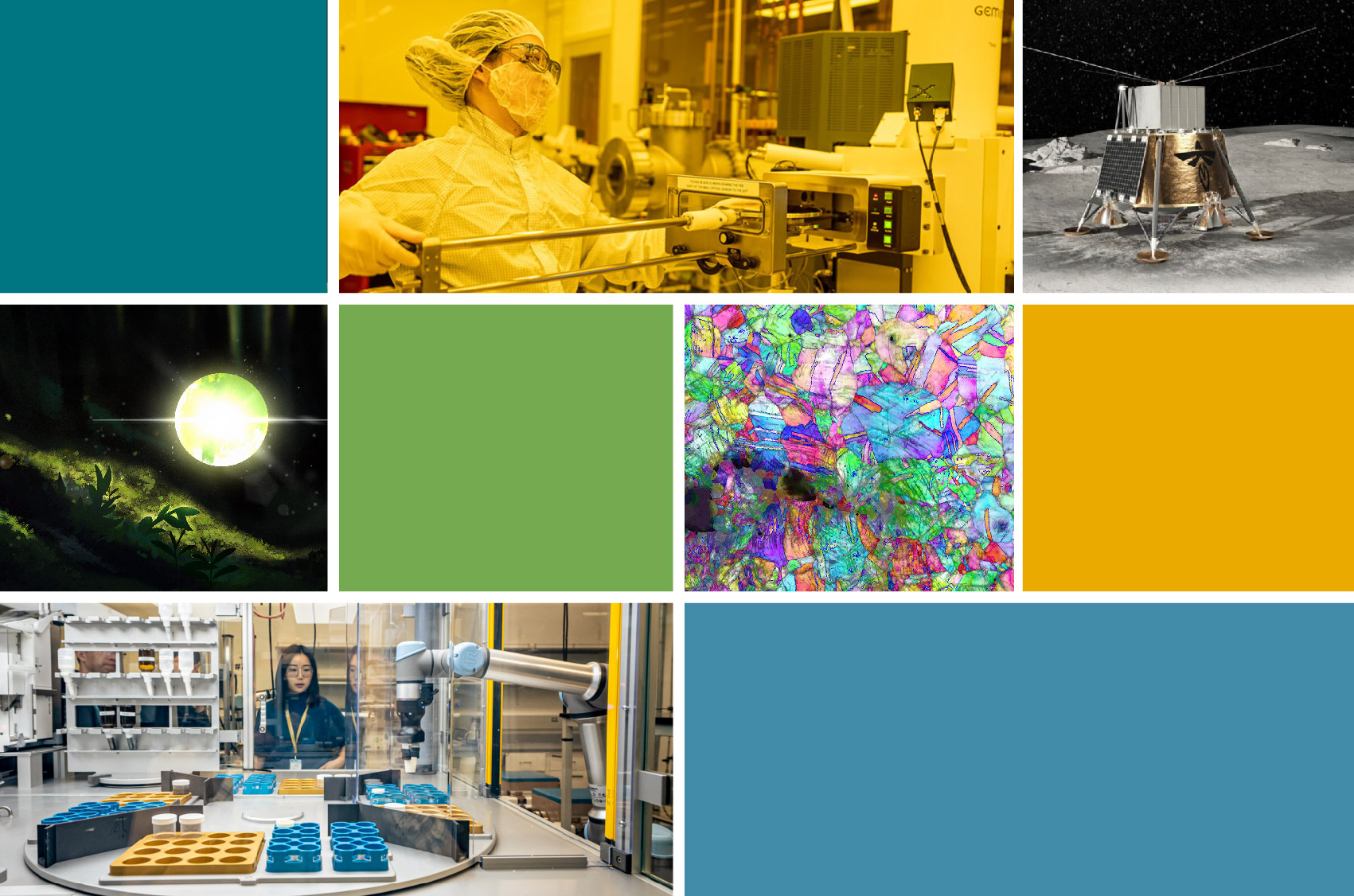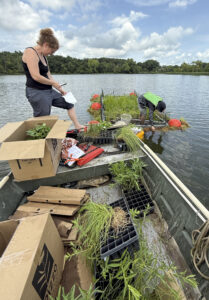What’s Contaminating Our Once-Pristine Water Sources? – CleanTechnica

Report on Water Quality Challenges and Alignment with Sustainable Development Goals
Introduction: The Critical Role of Water in Sustainable Development
Access to clean water is a foundational element for public health, economic stability, and environmental integrity, directly aligning with Sustainable Development Goal 6 (Clean Water and Sanitation). Natural water systems like streams and wetlands provide essential ecosystem services, including floodwater mitigation, groundwater recharge, pollution filtration, and habitat provision, which support SDG 14 (Life Below Water) and SDG 15 (Life on Land). In the United States, approximately 117 million people—one-third of the population—rely on drinking water from streams susceptible to pollution, highlighting the direct link between water quality and SDG 3 (Good Health and Well-being).
Regulatory and Institutional Challenges to SDG 6
Judicial and Executive Actions
Progress toward achieving water-related SDGs is impacted by the legal and political landscape. On March 4, 2025, a U.S. Supreme Court decision limited the Environmental Protection Agency’s (EPA) authority under the Clean Water Act (CWA). The ruling held that the EPA cannot impose “end-result” requirements in discharge permits that hold permittees responsible for meeting water quality standards without specifying the exact measures to be taken. Furthermore, executive orders issued by the Trump administration have had significant impacts on water resources and the ability of communities to participate in decisions affecting their water sources, challenging the principles of SDG 16 (Peace, Justice and Strong Institutions).
The Role of Scientific Research in Policy-Making
The formulation of effective water quality regulations, essential for meeting SDG targets, depends on sound empirical research. However, a trend of dismissing peer-reviewed scientific research impedes evidence-based policy-making. Peer-reviewed research provides validated, high-quality data and complex analyses necessary for addressing nuanced environmental issues. The disregard for scientific inquiry, particularly when it conflicts with political or industrial interests, undermines the development of effective, accountable, and transparent institutions as called for in SDG 16.
Case Studies: Regional Failures in Water Resource Management
Iowa: Agricultural Pollution and Public Health (SDG 3, SDG 6, SDG 12)
A landmark study by the Central Iowa Source Water Research Assessment (CISWRA) investigated the link between water quality and high cancer rates in the state. The research confirmed that the region’s river flow, ecological health, and drinking water quality are intrinsically connected.
- Key Findings: The report identified rivers as the primary drinking water source for approximately 600,000 people in Iowa. It concluded that these rivers contain harmful contaminants, with agricultural pollution being a significant source. Nitrate levels, comprising 85% of the total nitrogen load in several rivers, were found to be far above federal safety standards, increasing water treatment costs and posing a direct threat to SDG 3 and SDG 6.
- Recommendations for Sustainable Production (SDG 12): The study proposed several measures to mitigate agricultural pollution.
- Reductions in chemical inputs for crop production.
- Increased crop diversification.
- Limits on the density of livestock operations.
Despite the comprehensive, peer-reviewed nature of the report, its findings were suppressed. Public awareness funding was withdrawn, and the EPA reversed the designation of “impaired waters,” a move that prevents the implementation of stricter regulatory measures. This institutional failure demonstrates a direct conflict with the objectives of SDG 16, prioritizing industrial interests over public health and environmental protection.
Florida: Threats to Freshwater Aquifers (SDG 6, SDG 13, SDG 14, SDG 15)
Florida’s more than 1,000 freshwater springs, fed by the Floridan aquifer system, are critical natural resources supporting residents, agriculture, and ecosystems. However, unsustainable practices threaten these vital water sources, jeopardizing multiple SDGs.
- Agriculture (SDG 12): Runoff from fertilizers containing phosphates and nitrogen leads to algae blooms that degrade aquatic habitats, directly impacting SDG 14 and SDG 15. Waste from livestock operations further contributes to this pollution.
- Development (SDG 6): Urban expansion increases impervious surfaces, which prevents rainwater from recharging the aquifer. Pollutant-laden runoff from lawns, roads, and septic tanks further degrades water quality.
- Climate Change (SDG 13): Altered rainfall patterns and sea-level rise are causing saltwater intrusion into coastal springs, threatening the availability of fresh water.
- Industrial Extraction (SDG 12): The issuance of permits allowing for the withdrawal of millions of gallons of water for bottling at minimal cost represents an unsustainable use of a finite public resource.
The combination of excessive pollution and over-extraction of water has led to the degradation of these ecosystems, resulting in a loss of biodiversity and putting drinking water supplies at risk. Political pressure from powerful agricultural interests has blocked progress on nitrogen reduction plans. Current state funding for water quality projects is considered insufficient to address the scale of the problem, particularly from major polluters.
Conclusion: Systemic Barriers to Achieving Water-Related SDGs
The case studies from Iowa and Florida illustrate significant barriers to achieving sustainable water management in line with the SDGs. The influence of powerful agricultural and industrial interests, coupled with a political climate that devalues scientific evidence, undermines the effectiveness of environmental regulations and institutions. These challenges directly impede progress on SDG 6 (Clean Water and Sanitation), SDG 3 (Good Health and Well-being), SDG 12 (Responsible Consumption and Production), SDG 14 (Life Below Water), and SDG 15 (Life on Land). Achieving these goals requires a renewed commitment to science-based policy, the strengthening of regulatory bodies, and the establishment of transparent and accountable governance structures as envisioned in SDG 16.
Analysis of Sustainable Development Goals in the Article
1. Which SDGs are addressed or connected to the issues highlighted in the article?
- SDG 3: Good Health and Well-being: The article directly connects water quality to human health, citing concerns in Iowa where “high cancer rates” were potentially “related to poor water quality.” It also emphasizes that people depend on clean water for their health.
- SDG 6: Clean Water and Sanitation: This is the central theme of the article. It discusses the importance of clean water, the pollution of streams, rivers, and aquifers, the challenges in water resource management, and the need to protect water-related ecosystems. The text states, “Clean water is vital to our health, communities, and economy.”
- SDG 12: Responsible Consumption and Production: The article identifies unsustainable production patterns as major sources of water pollution. It points to “agricultural pollution” in Iowa from “chemical inputs for crop production” and “density of livestock,” as well as runoff from “fertilizers and pesticides” and “livestock waste” in Florida.
- SDG 15: Life on Land: The article addresses the degradation of freshwater ecosystems. It mentions that streams and wetlands “provide habitat for fish and wildlife” and describes how pollution in Florida’s springs leads to algae blooms that “suffocate a spring,” causing a loss of “seagrasses” and “biodiversity.”
- SDG 16: Peace, Justice and Strong Institutions: The article critiques the effectiveness and transparency of institutions responsible for protecting water quality. It highlights how the EPA reversed the “designation of impaired waters,” how political pressures from “powerful agricultural interests” have “blocked progress,” and how scientific research is dismissed or ignored by government entities.
2. What specific targets under those SDGs can be identified based on the article’s content?
- Target 3.9: By 2030, substantially reduce the number of deaths and illnesses from hazardous chemicals and air, water and soil pollution and contamination.
- The article connects to this target by investigating the link between “harmful contaminants” in Iowa’s rivers, such as nitrates and pesticides, and “high cancer rates” in the state, highlighting the health risks of water pollution.
- Target 6.1: By 2030, achieve universal and equitable access to safe and affordable drinking water for all.
- The article points to the vulnerability of drinking water sources, stating that “about 117 million US residents — one in three people – get drinking water from streams that are vulnerable to pollution.”
- Target 6.3: By 2030, improve water quality by reducing pollution, eliminating dumping and minimizing release of hazardous chemicals and materials.
- This target is central to the article, which details how Iowa’s rivers are “rife with harmful contaminants that include phosphorus and nitrogen, bacteria from animal and human waste, pesticides, and other chemicals.” It also notes that in Florida, runoff from fertilizers and pesticides is a “major part of the problem.”
- Target 6.5: By 2030, implement integrated water resources management at all levels.
- The article illustrates a failure in integrated management, where scientific recommendations from the CISWRA report to reduce agricultural pollution were ignored, and political influence from the “farm industry” led to the reversal of protective measures by the EPA.
- Target 6.6: By 2020, protect and restore water-related ecosystems, including mountains, forests, wetlands, rivers, aquifers and lakes.
- The article discusses the degradation of Florida’s freshwater springs, noting that “All but four of the region’s springs are considered polluted” and are threatened by pollution, development, and unsustainable water withdrawal.
- Target 12.4: By 2020, achieve the environmentally sound management of chemicals and all wastes throughout their life cycle…and significantly reduce their release to…water and soil.
- The article highlights the failure to manage agricultural chemicals, as the CISWRA report’s recommendations for “reductions in chemical inputs for crop production” in Iowa were not implemented.
- Target 15.1: By 2020, ensure the conservation, restoration and sustainable use of terrestrial and inland freshwater ecosystems and their services.
- The article describes the negative impacts on freshwater ecosystems, such as the loss of “seagrasses” and “biodiversity” in Florida’s springs due to pollution-fueled algae blooms.
- Target 16.6: Develop effective, accountable and transparent institutions at all levels.
- The article critiques institutional failures, such as when the EPA reversed the “designation of impaired waters” under political pressure and when a “$400,000” budget to publicize scientific findings on water pollution was “withdrawn.”
3. Are there any indicators mentioned or implied in the article that can be used to measure progress towards the identified targets?
- Population with access to safely managed drinking water services: The article implies a negative indicator by stating “about 117 million US residents — one in three people – get drinking water from streams that are vulnerable to pollution.”
- Concentration of pollutants in water bodies: The article explicitly mentions that in Iowa, “nitrate levels in key drinking-water sources were measured in quantities far higher than is allowed under federal safety standards.” It also identifies phosphorus, nitrogen, and bacteria as key pollutants.
- Proportion of water bodies with good ambient water quality: An indicator is implied when the article states that in Florida, “All but four of the region’s springs are considered polluted,” suggesting a metric based on the number or percentage of polluted versus clean water bodies.
- Economic impact of water pollution: The article provides a specific economic indicator, noting that “a 1% increase in groundwater nitrate levels is associated with an increase in treatment costs by about 0.048% to 0.052%.”
- Government expenditure on environmental protection: The article mentions financial allocations as an indicator of government commitment, stating that “State funding for springs runs about $50 million a year,” but notes that environmental advocates believe these amounts “are not nearly enough.”
- Health outcomes related to pollution: The article implies a health indicator by referencing the investigation into whether “high cancer rates” in Iowa were related to poor water quality.
- Water withdrawal and availability: An indicator for sustainable water use is mentioned in the context of Florida, where “first magnitude” springs discharge “at least 65 million gallons of water every day,” but the volume of permits for water withdrawal is described as “not sustainable.”
4. Table of SDGs, Targets, and Indicators
| SDGs | Targets | Indicators |
|---|---|---|
| SDG 3: Good Health and Well-being | 3.9: Reduce illnesses from water pollution and contamination. | Incidence of water-related diseases (e.g., “high cancer rates” potentially linked to water quality). |
| SDG 6: Clean Water and Sanitation | 6.1: Achieve access to safe drinking water. | Number of people relying on vulnerable water sources (e.g., “117 million US residents”). |
| 6.3: Improve water quality by reducing pollution. | Concentration of pollutants (e.g., “nitrate levels…far higher than is allowed”); Increase in water treatment costs due to pollution (e.g., “0.048% to 0.052%” cost increase per 1% nitrate increase). | |
| 6.6: Protect and restore water-related ecosystems. | Proportion of polluted water bodies (e.g., “All but four of the region’s springs are considered polluted”); Volume of water discharge from springs (e.g., “65 million gallons of water every day”). | |
| SDG 12: Responsible Consumption and Production | 12.4: Environmentally sound management of chemicals. | Implementation of policies to reduce chemical inputs in agriculture (the article notes a failure to implement these). |
| SDG 15: Life on Land | 15.1: Conserve and restore freshwater ecosystems. | Loss of biodiversity in freshwater ecosystems (e.g., “lose all of the seagrasses”). |
| SDG 16: Peace, Justice and Strong Institutions | 16.6: Develop effective, accountable, and transparent institutions. | Government budget allocated to environmental protection (e.g., “$50 million a year” for springs); Reversal of protective environmental designations (e.g., EPA reversing “impaired waters” status). |
Source: cleantechnica.com

What is Your Reaction?
 Like
0
Like
0
 Dislike
0
Dislike
0
 Love
0
Love
0
 Funny
0
Funny
0
 Angry
0
Angry
0
 Sad
0
Sad
0
 Wow
0
Wow
0














































.jpg.webp?itok=0ZsAnae9#)







:focal(1500,1000)/https://media.globalcitizen.org/a6/9a/a69a4720-d8a1-4715-b596-18738d03c05c/rotary_polio_hero_image.jpg?#)

/countries/sri-lanka/photo-credit---dmc-sri-lanka.tmb-1200v.jpg?sfvrsn=dc298bcc_1#)



















